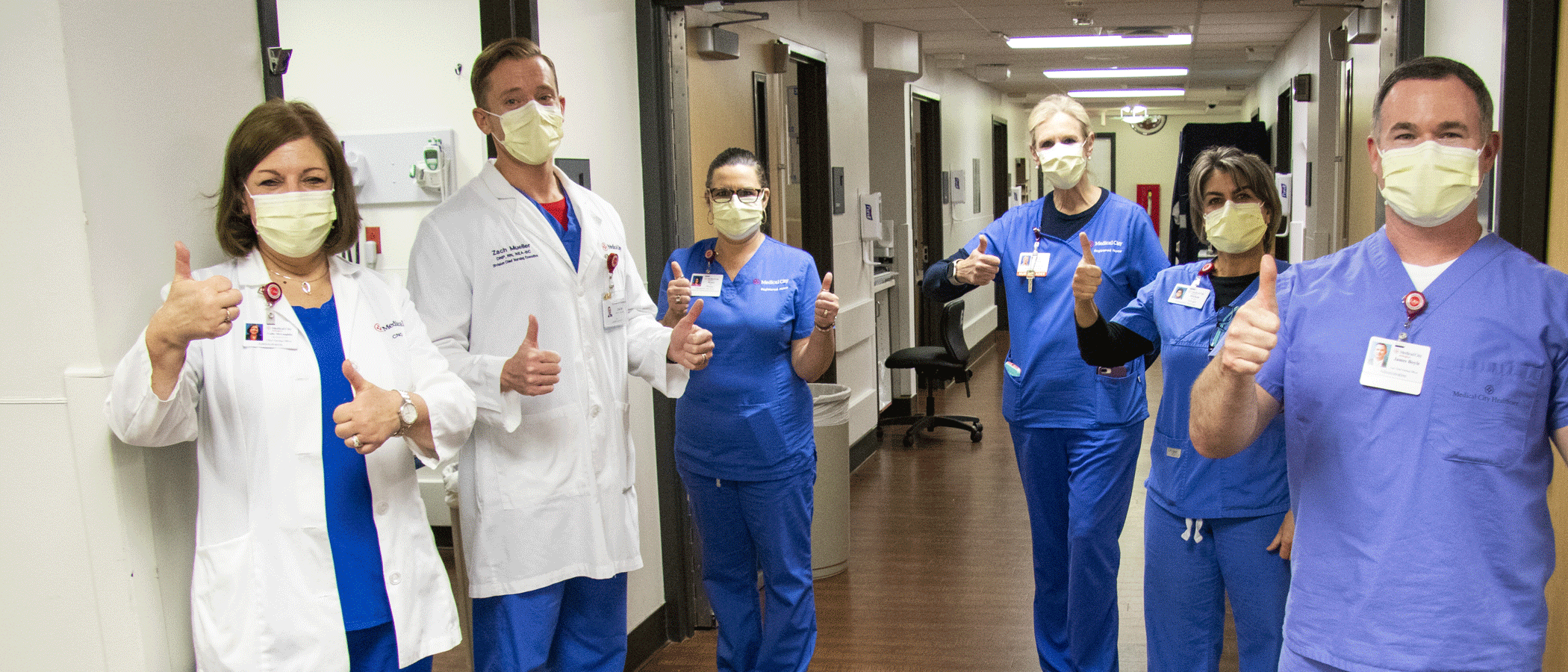Each year, the American Hospital Association celebrates hospitals, health systems and health care workers during National Hospital Week, which took place May 9-15. To pay homage to the events of the past year, the theme of this year’s National Hospital Week was Inspiring Hope Through Healing. AHA, the Texas Hospital Association and hospital associations around the country highlighted the innovation of hospitals and the impact health care workers have on their communities.
“Over the last 14 months Texas hospitals and frontline workers have shown innovation, care and resilience.
Hospital week is a time to celebrate and highlight our health care heroes,” said Ted Shaw, THA president and CEO. “Hospitals are anchors in Texas communities. They welcome new life, mend broken bones, conduct groundbreaking research and innovate care delivery. They serve us without fail, no matter the emergency.”
With hospitals continuing the year long fight on the frontlines of COVID-19, there is no better time to celebrate and raise awareness about the important work of Texas hospitals. Our frontline workers are making huge sacrifices, working long hours and providing high-quality care for their patients. National Hospital Week is preceded by National Nurses Week, which recognizes the important work of our nation’s nurses and concludes on May 12, Florence Nightingale’s birthday.
In recognition and celebration of National Hospital Week, THA posted daily health care heroes and hospital trivia across its social media platforms. Make sure you’re following THA on Facebook, Twitter, LinkedIn and Instagram to support our state’s hospitals and health care heroes.
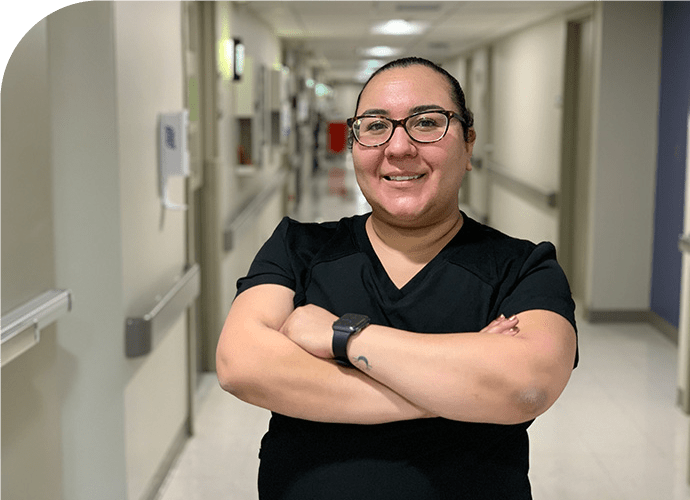
Melissa Carrillo, RN, BSN
Melissa Carrillo, RN, BSN, is a telemetry and intermediate care unit charge nurse at Las Palmas Medical Center in El Paso. During COVID-19, Melissa helped her colleagues on the floor with training on new equipment, taking extra shifts and was integral in planning unit changes to accommodate the surge of COVID-19-positive patients. She had been with the hospital just over six years before the onset of COVID-19, and she had just completed her BSN degree. She cherished the opportunity to put her new skills to use and learn from others helping to fight the virus surge in El Paso. However, Melissa felt torn between her career and her personal life since she shared a home with her elderly mother. She decided to send her mother to live with her sister across the city. Melissa could now concentrate on helping her patients, but she felt alone. Because of that, she spent extra time talking to and consoling her patients so they wouldn’t feel alone. After 10 months away from her mother and now that they’re both vaccinated, Melissa and her mom live together again. Melissa continues to shine in her role and mentors others in her unit. She’s again looking to further her education.
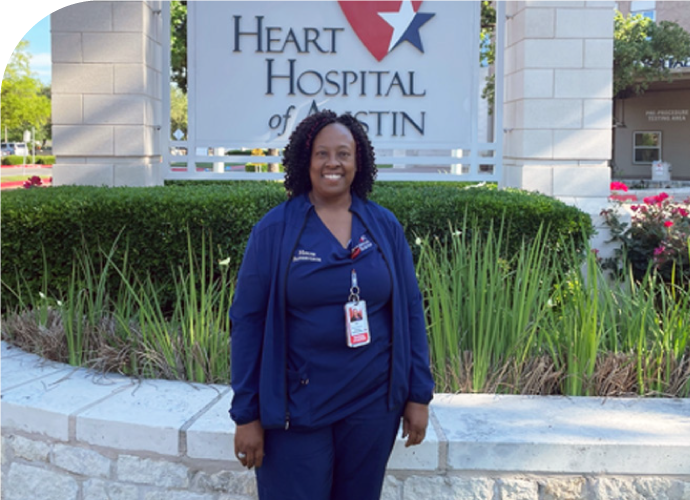
Inger Glasper, RN
Inger Glasper, RN, is a nursing house supervisor at Heart Hospital of Austin. In addition to serving as a nurse leader during the stressful COVID-19 pandemic, Inger volunteered her time during her days off to provide COVID-19 immunizations to her fellow St. David’s HealthCare colleagues and to the public. As a volunteer for Austin Public Health, Inger worked more than 50 shifts ranging from four to eight hours in length to ensure the community was immunized.
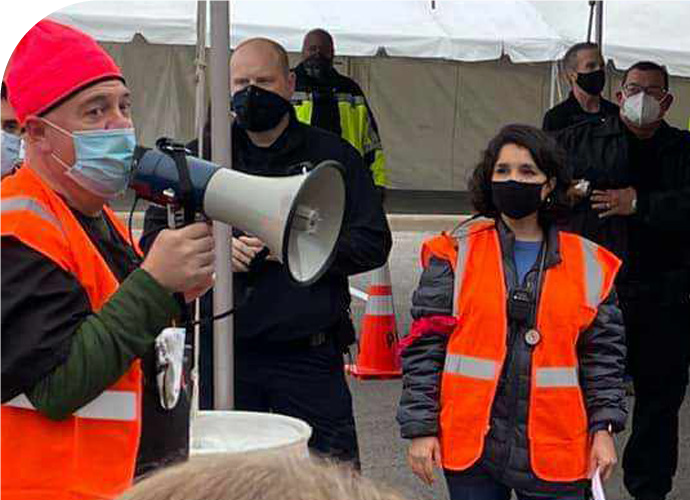
Toby Hatton, RN
Toby Hatton, RN, with Ascension Texas’ Infectious Disease Response Unit, was the operations chief at the mass vaccination site distribution center at the Circuit of the Americas (COTA). The mass vaccination clinic at Austin’s COTA grew from 600 doses in the first weekend to more than 100,000 doses administered in 13 weeks. The site was a collaboration between the Ascension Seton hospital network, CommUnityCare Health Centers, and Travis, Bastrop, Hays and Caldwell counties. Toby’s leadership at the COTA vaccination clinic included drafting, organizing and overseeing a clinical flow plan. Toby secured vaccines, recruited hundreds of volunteers, from pharmacy leads to clinical staff. Toby ensured the timely data entry of vaccine administration and critical reporting to the state. Toby himself has administered thousands of vaccines.
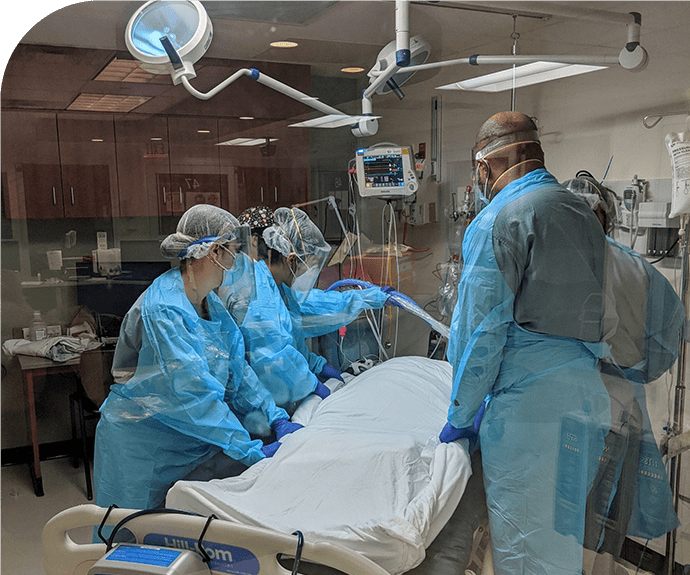
Lyndon B. Johnson Hospital Prone Team
The Lyndon B. Johnson Hospital Prone Team was created by nurse leadership to care for COVID-19 patients. Medical professionals around the world were struggling to treat COVID-19 patients, particularly those on ventilators. So, when the nursing leadership team at Harris Health System’s Lyndon B. Johnson Hospital in Houston learned about a promising new technique called “proning,” they were all in to use it. Proning is simply a matter of positioning patients on their stomachs, which helps to improve oxygen levels and keep fluids out of their lungs. The technique is easier said than done. Nurses can’t just unhook a patient’s ventilator. It takes a team effort to keep them attached to all necessary equipment. With COVID-19 restrictions in place and limited nursing resources, the nursing leadership team had to be creative to get the job done without disrupting normal bedside care. The hospital created a proning team that included respiratory therapists, nurses, physicians and physical and occupational therapists. First, they wrap a patient tightly with a sheet (cocoon-like) for safety and comfort, then in one very carefully orchestrated motion they log-roll the patients onto their stomachs where they lay for 12 to 16 hours. Thanks to the initiative and collaborative spirit of staff, many of these patients were discharged home and began their journey to recovery.
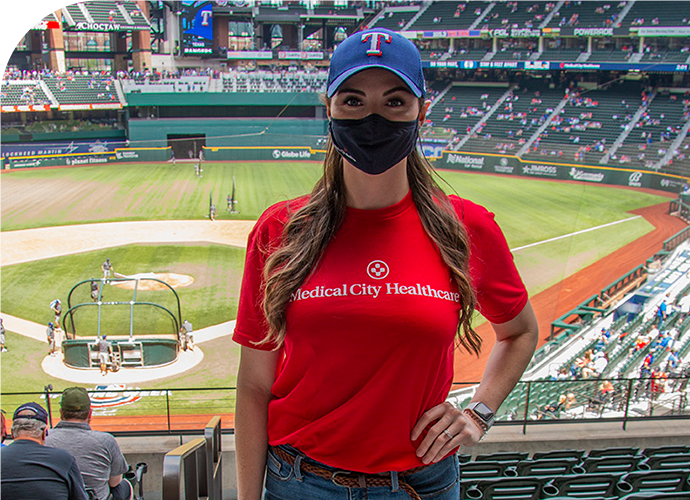
Sydney Maxwell, RN
Only six months out of nursing school when the pandemic hit last year, Sydney Maxwell, RN, was one of the first nurse heroes at Medical City McKinney to volunteer to care for COVID-19 patients. With her passionate commitment to care, Maxwell is a great representative of all her nursing colleagues. At the height of the pandemic, she even went shopping for clothing that patients could wear home or food and toiletries they might need to get them through a two-week quarantine after leaving the hospital. Jim Martin was one of those patients. He recovered from COVID-19 after being on a ventilator and battling pneumonia. He was so grateful for the care he received that he returned to the hospital later to find Maxwell and thank her. “I do not know how I would have gotten through it without your help,” Martin wrote in a “thank-you” letter. “The amazing thing about it is that you chose to help, knowing full well the life-threatening scenario.”
As one of the first nurses on the frontlines of the pandemic, Maxwell used her experiences to equip other nurses to care for COVID-19 patients. She assembled special COVID-19 supply kits to help colleagues working the next shift. Maxwell also put together – and regularly updated – a COVID-19 education binder to assist nurses who were new to caring for these patients.
For her work, Maxwell was selected to represent health care heroes from across North Texas by catching the ceremonial first pitch during the Texas Rangers’ opening day.
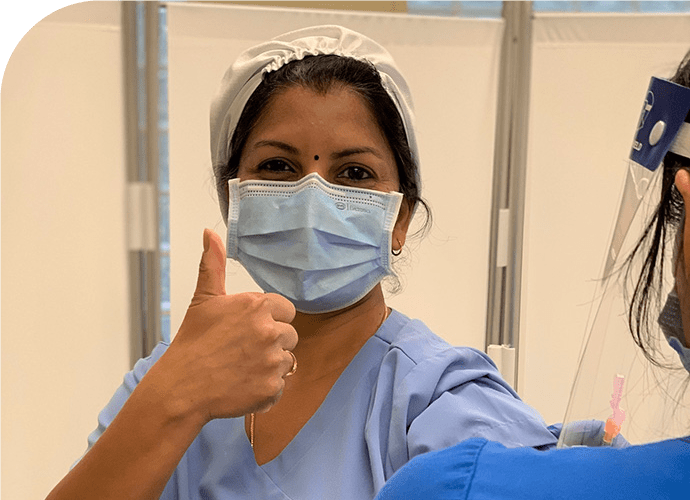
Priya Subramanian, M.D.
Dr. Priya Subramanian is the infectious disease medical director at Texas Health Harris Methodist Hospital Hurst-Euless-Bedford. She, like many health care professionals, was concerned about catching and spreading COVID-19. It was there every day when she left her house to head to work. And it was there every time she stepped into a COVID-19 positive patient room.
“Sometimes there’s a question as to whether we should enter the room or just do a chart review, but I never hesitated because to me, meeting and getting to know the patients is very important,” Subramanian said. “I went into every single patient’s room – through all the masks and shields – so I could talk to them, educate them, reassure them and give them the motivation to get better.”
When the vaccine became available, Dr. Subramanian got her first dose the day it arrived. “I took the vaccine on day one because I wanted to be an example for others,” Subramanian said. “I took it because I know it’s safe and I wanted to show everyone that.”
Because of her commitment, Dr. Subramanian was presented with the 2020 Galusha Award by her fellow physicians. Named after Dr. Newton Galusha, a beloved physician who contributed to the growth and success of the hospital and medical staff before his passing in 2007, the award is given each year to a physician at Texas Health HEB who demonstrates true leadership, superb clinical skills, and devotion to excellent patient care. As part of her recognition, Dr. Subramanian receives a pass that allows her to park anywhere on campus for a year. Rather than keeping it to herself, Dr. Subramanian is giving one employee a month, who has gone above and beyond to help infection prevention, the use of this coveted spot.
